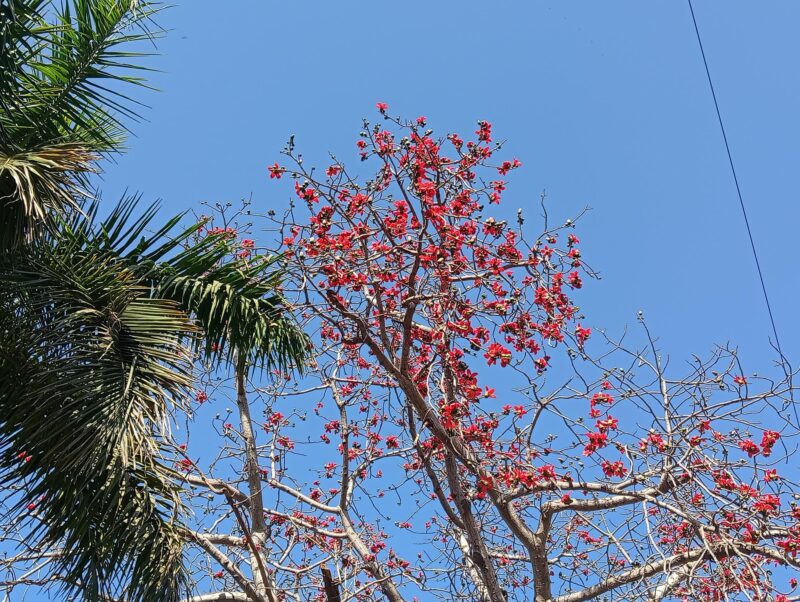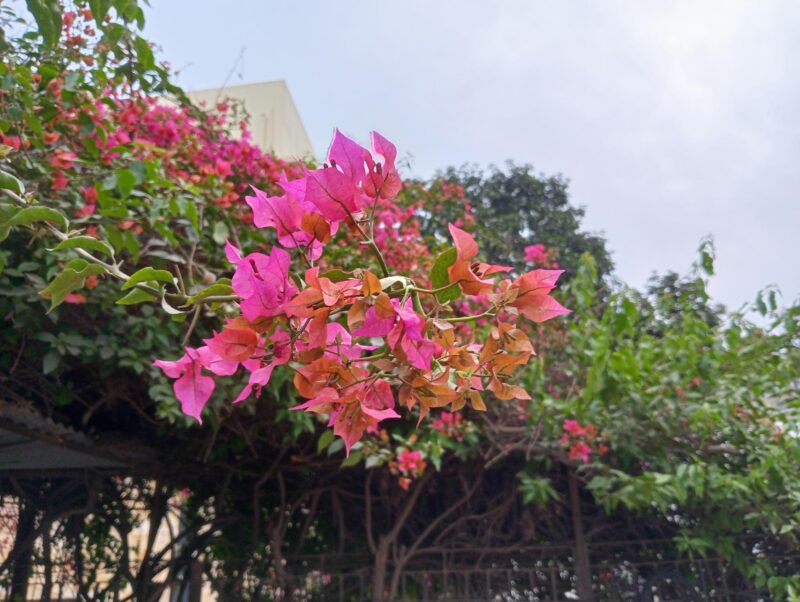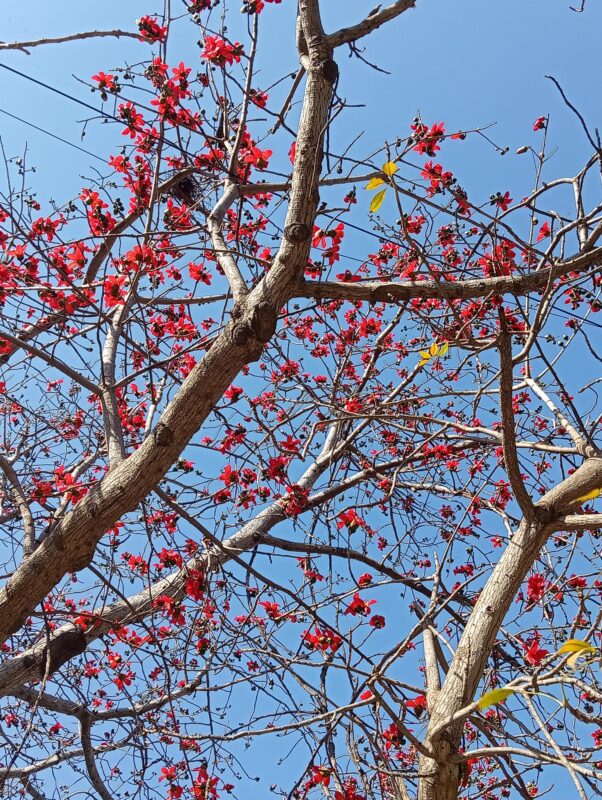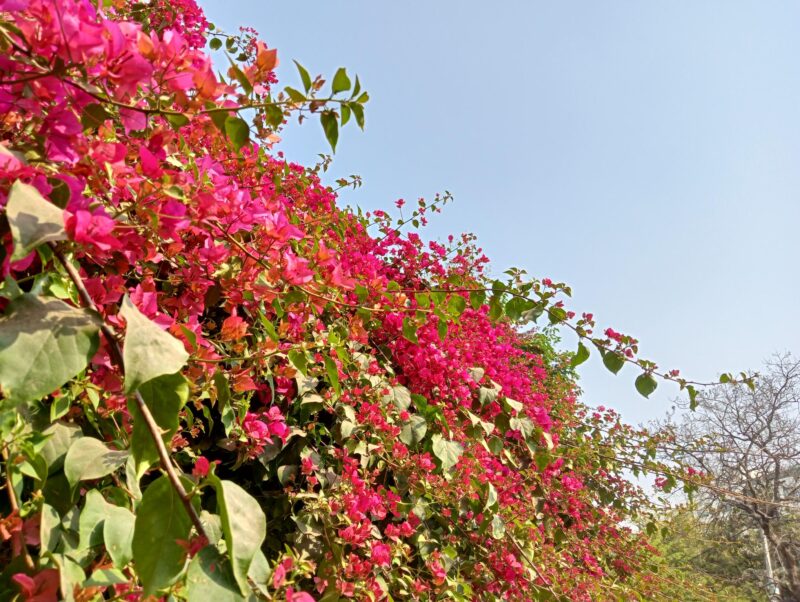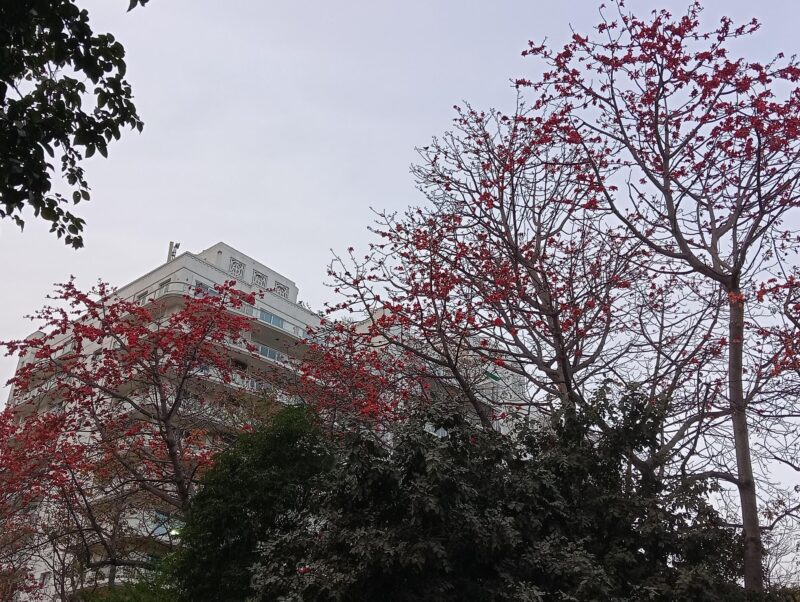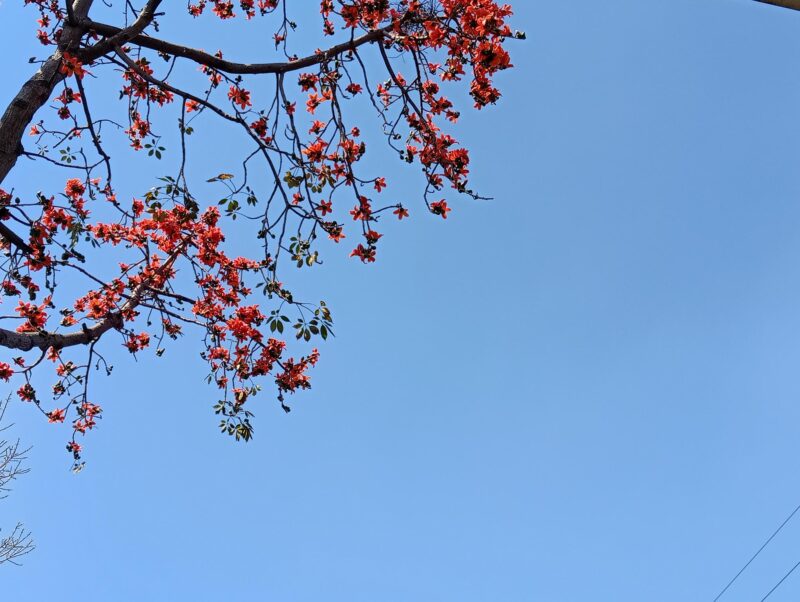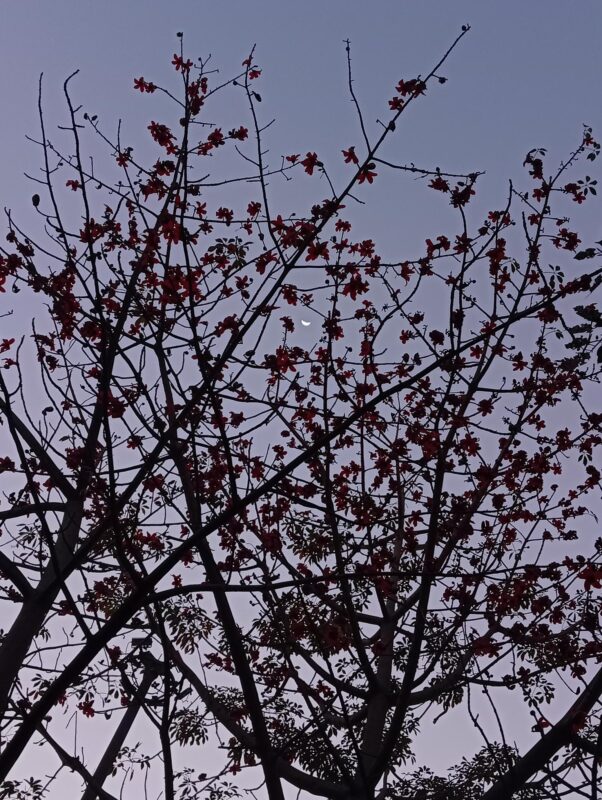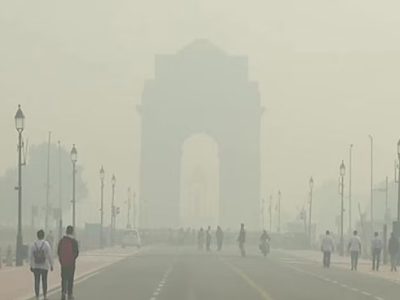The national capital turns into a floral delight with the arrival of spring. As flowers bloom and buds sprout from trees, people go on outings to enjoy the springtime across Delhi to immerse themselves in the beauty of blossoming bright flowers and lush greenery.
At every nook and corner of the city, there lies a majestic tall dry deciduous tree popularly called the Semal (also called the silk cotton tree, the cotton tree, Bombax, Indian Kapok, Shembal), to greet Delhiites. From trees to roads, clusters of large red flowers with five petals on each of them are found everywhere.
Flowers are blooming at the city’s carefully-landscaped roundabouts at different traffic circles, park and other places of Delhi.
They attract all forms of life in the capital city: many birds and animals frequent their visits to the Silk Cotton, and humans too can often be found distracted during a walk or a drive through the city, gaping at the magnificence of Semals with wide eyes and necks stretched upwards. Birds perch on the leafless branches and sing merrily the songs of spring, butterflies hover over the scarlet flowers as they dance in Delhi’s cool spring breeze and eventually shed one by one, making carpets of red across the city.
Semal has a silvery bark with the lower sections covered with conical prickles perhaps to deter animals from attacking. Its wood is too soft to be very useful, the plant, however, does have medicinal value.
The blossoming of the tree has become a testimony to spring for Delhiwalas over the years.
A walk-through the city’s red blooms:
